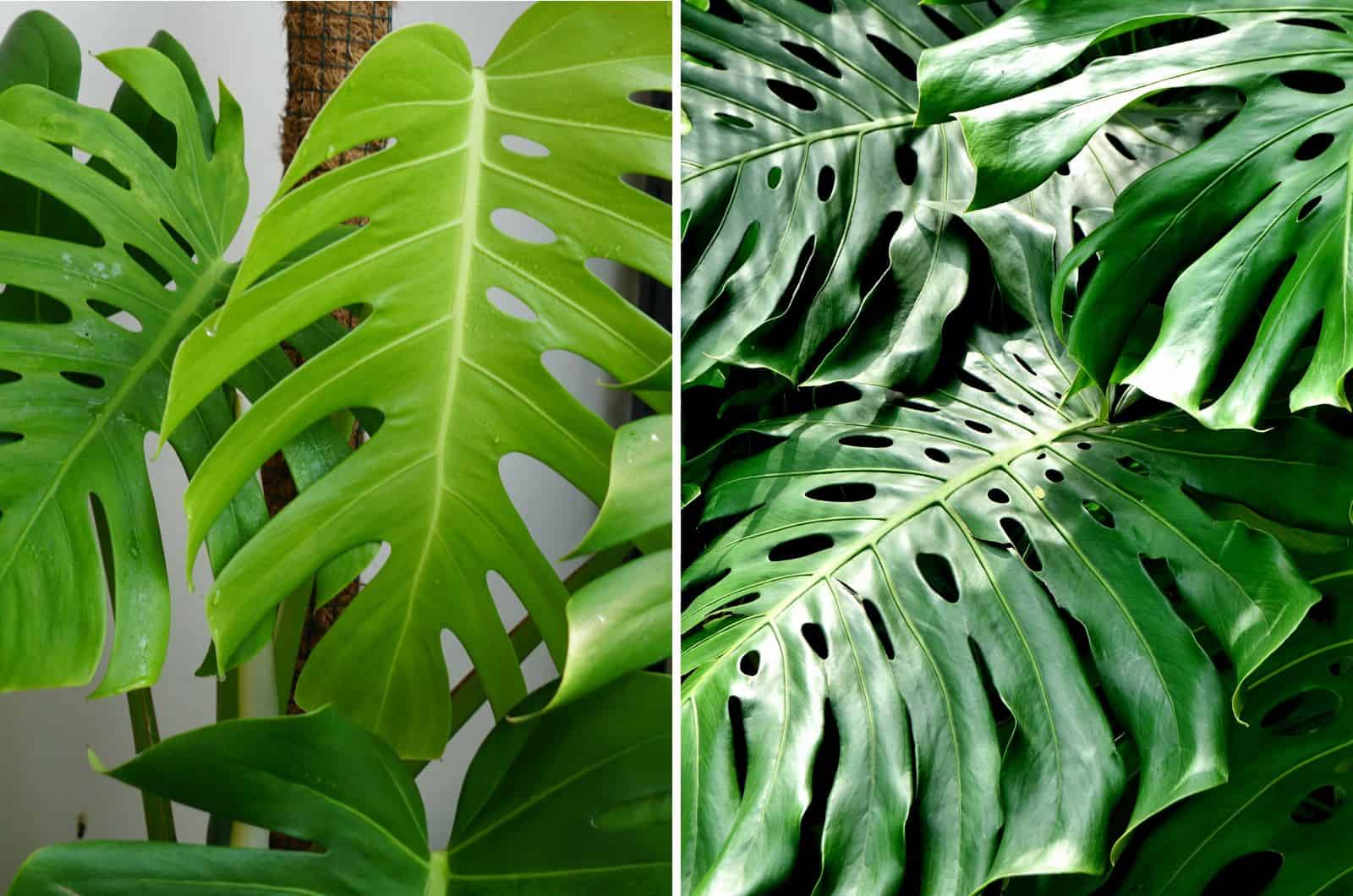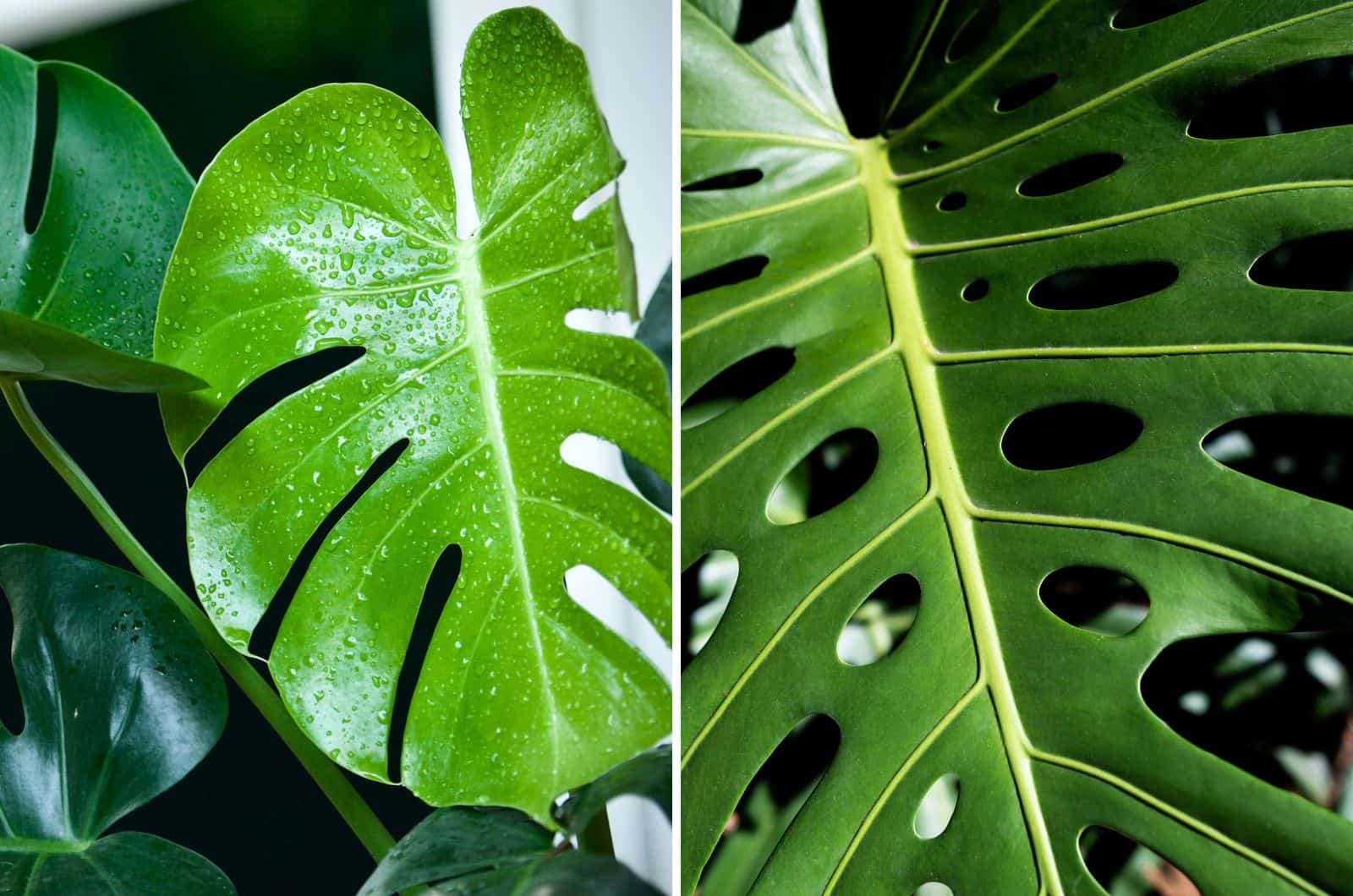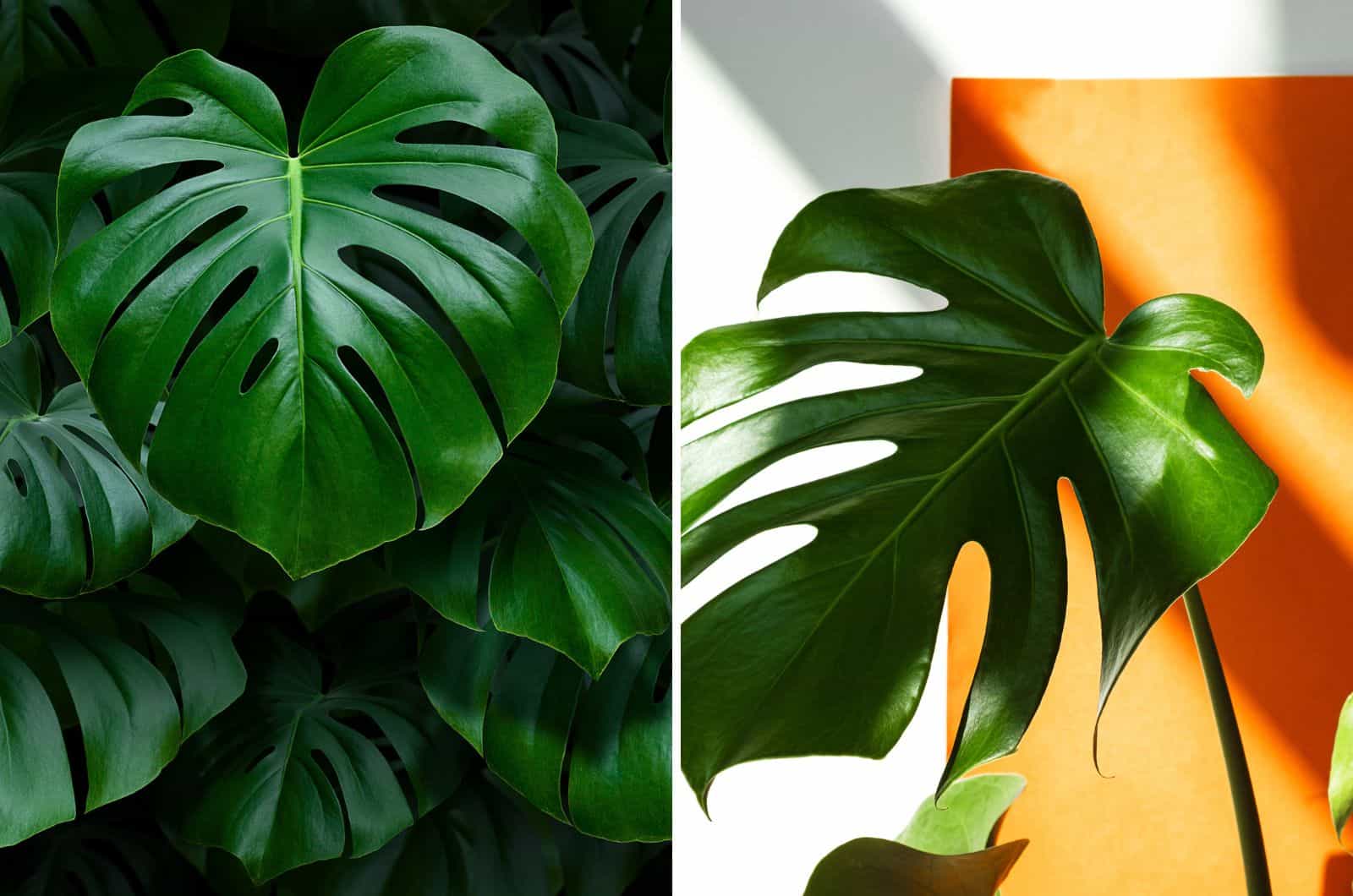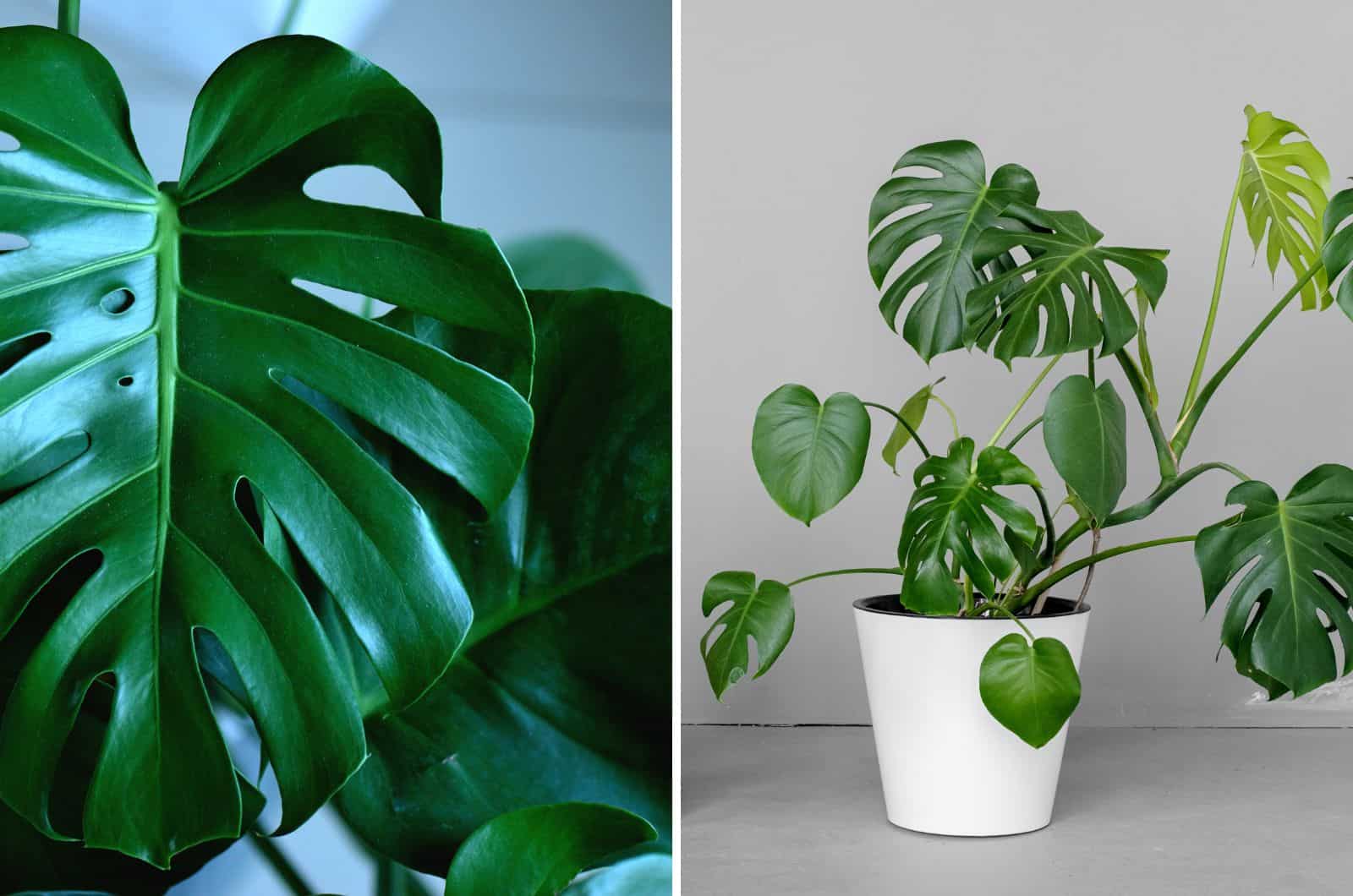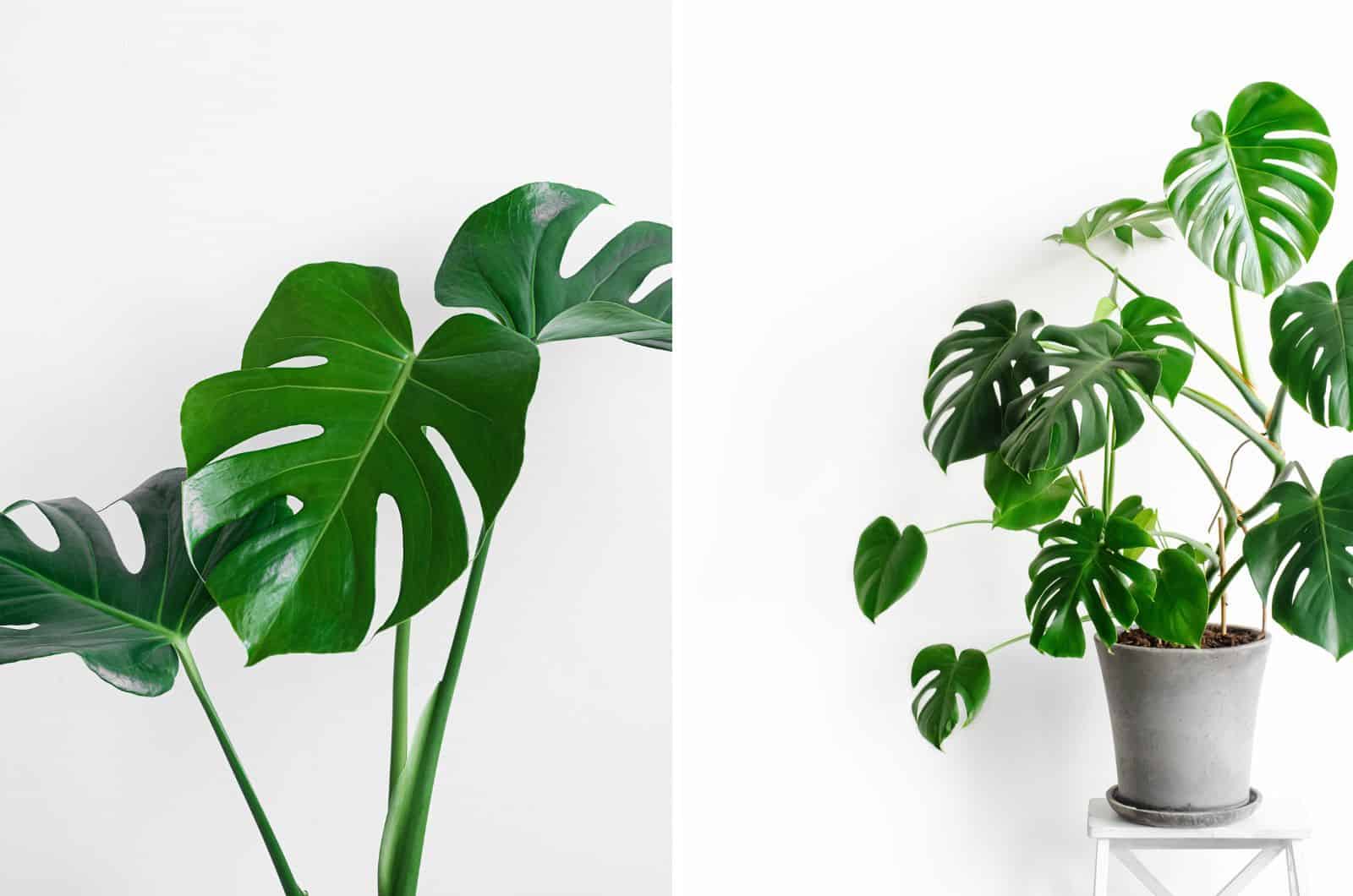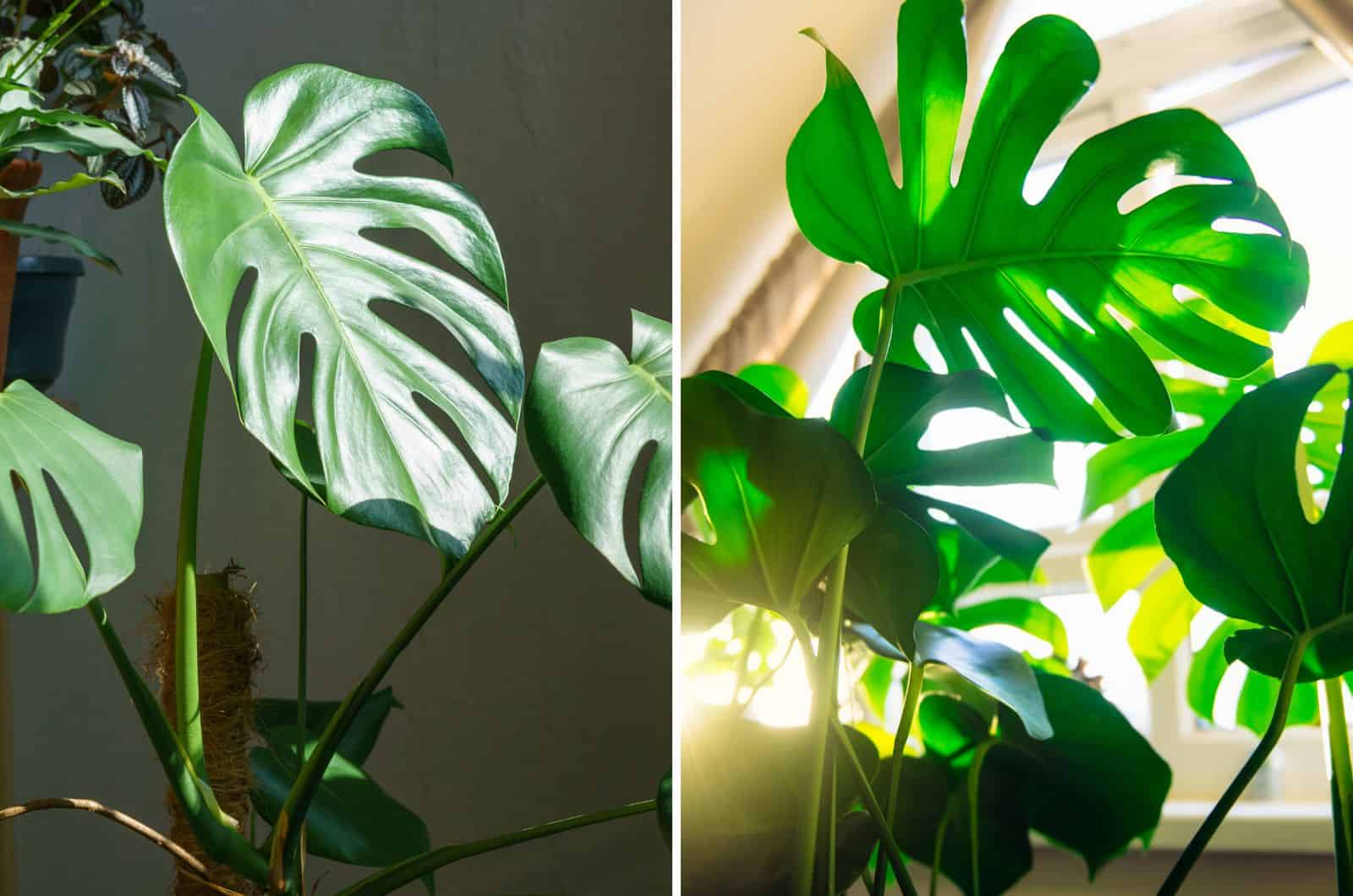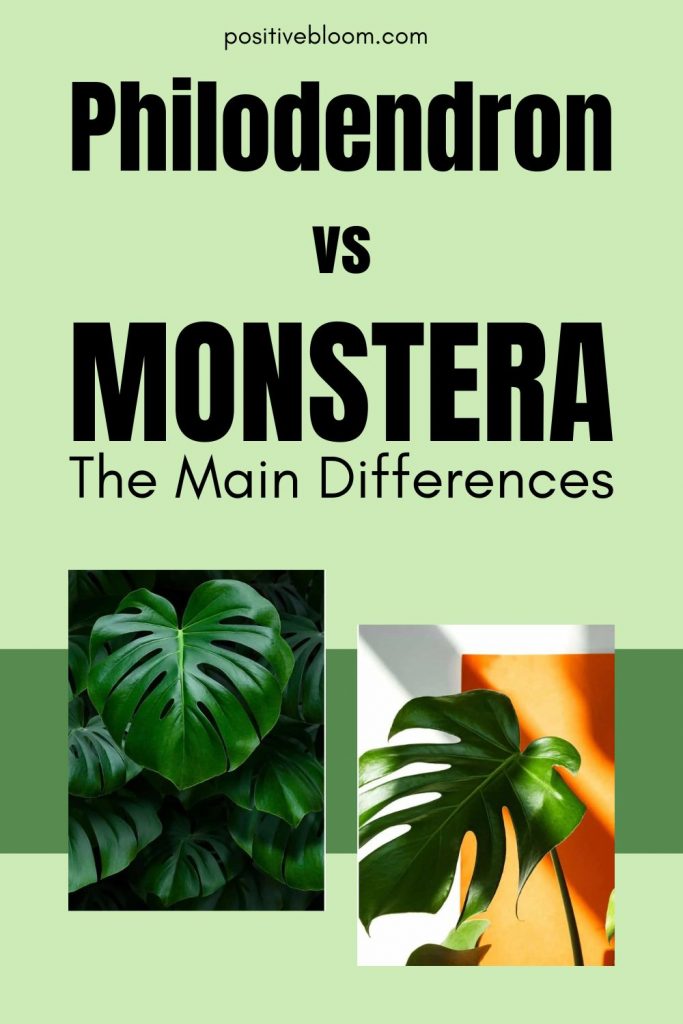Philodendrons and Monsteras are by far the most common indoor plants. Experienced houseplant lovers can quickly differentiate these plants, but for beginner growers it’s a totally different story. Even if the plants are placed next to each other, it is still hard to differentiate between them.
Philodendrons and Monsteras aren’t the same plants, although it may not seem that way.
To resolve confusion, I’ll teach you all about Philodendron vs Monstera in this article. I have to mention that the biggest resemblance is between the Split-leaf Philodendron and Monstera deliciosa.
Don’t worry, I’ll describe the differences in great detail so you never get tricked again.
Let’s get started!
Philodendron vs Monstera: Key Differences
The word “Philodendron” originated from the Greek language; Philodendron can be translated to love tree, with Philo meaning love and dendron meaning tree.
On the other hand, the word monstera comes from Latin and means monstrous or abnormal; deliciosa refers to the plant’s delicious fruits.
What makes one species different from the other? The two species differ in taxonomic background, leaf shape, size, texture, stems, root system, root type, fruits, and flowers.
Philodendrons and Monsteras differ in taxonomy, the shape and size of the leaves, fenestration, fruits, stems, cataphyll, and moving parts.
It may be tricky to decide which plant you have by looking at only one difference, so you’ll need to pay close attention to all of them.
Let’s get into details!
Taxonomy
Taxonomy may sound too complicated for some growers, but once you learn the basics you’ll know why it matters so much. Genes aren’t only important for humans – but also for plants.
Both Monsteras and Philodendrons belong to the Plantae Kingdom because they are plants. They’re both Angiosperms, which means Philodendrons and Monsteras are flowering plants.
They are also Monocots because their seeds have only one embryonic leaf. Regarding Order, these plants belong to the Alismatales because their flowers consist of spadix and spathe.
Plants such as Pothos and peace lily have these flower characteristics and belong to the Araceae family (arum family). This is also the family of Philodendrons and Monsteras.
Genera
This is the part where similarities end in a taxonomical sense. The Araceae family includes over 3,500 species and over 100 genera. The Philodendron and Monstera are genera, which means the Philodendron and Monstera species belong to different genera.
When you take a look at the scientific names for the Tree Philodendron, which are Thaumatophyllum bipinnatifidum and Philodendron selloum, it’s evident that there is no Monstera word at all. Some researchers claim that this Philodendron should be moved to the Thamatophyllum genus due to its characteristics.
The Monstera genus consists of over 50 species, such as Monstera acuminata and Monstera adansonii.
The most common variety is Monstera deliciosa, aka Split-leaf Philodendron, aka Swiss cheese plant, aka Philodendron Monstera.
Therefore, Monsteras and Philodendrons are completely different plants, even though the names are used interchangeably.
Size
Most people recognize Monsteras because of their glossy, large leaves. Believe it or not, Monsteras can grow over 30 feet tall in their natural habitat. Luckily, they won’t reach this size indoors.
However, they may reach up to 9 feet when grown as houseplants, which is still pretty large.
On the other hand, Philodendrons can grow up to 15 feet tall in their natural habitat. Still, they typically reach 3 feet when grown indoors.
Regarding leaf size, Philodendrons also have smaller leaves.
Leaves & Stems
In terms of leaf shape, both plants have split-leaf patterns and heart-shaped leaves. But the main difference is in holes, known as fenestrations.
Monsteras develop fenestrations, but Philodendrons don’t have this feature. Monsteras develop these fenestrations after the leaves unfurl. If your Monstera plant doesn’t have holes after unfurling, you’ll need to wait for other leaves to appear.
Younger Monstera leaves don’t typically have these holes, but will develop them when the plant reaches its third birthday.
The definite answer to why Swiss cheese plants develop fenestrations doesn’t exist. Still, some researchers claim that these plants adapt to low light conditions by forming holes.
There are also claims that these holes protect Monsteras from strong winds. However, none of these have been proven.
Philodendron leaves don’t have holes, but split to create slender, leafy fingers. Additionally, Philodendron leaves have a leathery texture and seem ruffled.
The stems of Monsteras are less woody and narrow, and can reach a length of three inches. Philodendron stems may reach about 8 inches in diameter.
Fruits
Monsteras and Philodendrons are flowering plants, but you’ll rarely see them blooming indoors. The Monstera deliciosa produces small flowers, and they are typically surrounded by a boat-shaped spathe. The flowers are white and can grow up to 12 inches long.
Philodendron flowers are almost the same. While in bloom, Monsteras develop delicious fruits. The fruits are also edible, but only if fully ripe!
If you eat unripe Monstera fruit, you’ll suffer from poisoning. That’s because the fruits contain calcium oxalate crystals, which disappear when they fully ripen.
If you are wondering how the fruit tastes, eat banana and pineapple together; that’s pretty close to the taste of Monstera fruits.
Philodendrons don’t produce fruit and may take over 15 years to bloom.
Cataphyll
Philodendrons and Monsteras both have cataphylls, which are are modified leaves that resemble bracts and serve to shield freshly developing leaves.
The difference is that Monsteras have these throughout their life, whereas Philodendron’s cataphyll falls off.
Moving Parts
The dark green and glossy leaves of Monsteras have a knee-like joint scientifically known as pulvinus or geniculum. This feature enables them to follow the light.
Philodendron species don’t have this feature. However, the new Philo species, Philodendron geniculatum, may display geniculum.
Split-Leaf Philodendron vs Monstera Deliciosa: Similarities
The Monstera deliciosa is often referred to as Split-leaf Philodendron, but it’s not actually a Philodendron plant.
We have seen the differences, so now let’s see why these plants are frequently mistaken for one another.
Philodendrons And Monsteras Thrive In The Same Conditions
Monstera plants originated in Central America, from Southern Mexico to Panama. Philodendrons are found in Central America, but also grow in South America.
These plants grow in tropical climates, so they prefer high humidity, bright indirect light, warm temperatures, and well-draining soil.
They Are Easy To Maintain
Tropical plants are commonly grown as houseplants, and it seems like Philodendrons and Monsteras have the leading roles.
One of the main reasons these plants are commonly found in households is that they are easy to maintain. When you ask an experienced grower how to take care of tropical plants, they’ll tell you to mimic their natural environment.
Taking into consideration that these plants are from rainforests, many growers think that mimicking those conditions might be too hard.
Luckily, that’s far from the truth. For example, Monsteras and Philodendrons thrive in bright indirect light. These plants are very sensitive to direct sunlight, so we need to find a spot near a sunny window and place sheer curtains to filter the light.
The second thing is humidity; tropical plants grow in a humid environment, and typical household humidity isn’t enough. Grouping your plants, using the pebble tray method, or investing in a humidifier will help you raise humidity and create conditions similar to those in rainforests.
These plants grow well in Average household temperatures, but despise temperature fluctuations and cold drafts.
You need to ensure well-draining and porous soil, and water your plants once the upper part of the soil dries out. The best idea would be to use rainwater for these plants because it meets all their requirements regarding water type.
They Produce Aerial Roots
Both Philodendrons and Monsteras produce aerial roots. These plants are climbers, which means these roots help them climb on taller trees.
Once the aerial roots emerge from the nodes, they look more like lumps, but as they mature they become longer and can grow to a length of a few feet.
Think of the roots as some kind of anchor that supports plants developing upwards. These types of roots have another function; they promote plant hydration by absorbing moisture from the air.
Growers stake their Monsteras and Philodendrons to support their growth.
We use different tools for support, such as moss poles or trellises. Don’t forget to keep the moss pole moist if you decide to use it.
They Are Hemiepiphytes
Philodendrons and Monsteras are hemiepiphytes. What does this mean? The term hemiepiphytes refers to plants that spend one part of their life cycle attached to other plants.
These plants, and most other aroids, start their life in the soil. Once they find a suitable tree, they’ll start climbing.
Although these plants grow on taller trees, they are still linked to the soil surface.
They Are Diverse
The Monstera and Philodendron generas have a lot to offer. There are many stunning Monstera varieties, and the majority are pretty easy to maintain indoors.
The Philodendron genus is even more diverse, and includes over 450 species. Some rare Philodendron species are impossible to find and grow indoors.
Luckily, some species, such as Philodendron Dark Lord and Philodendron Cream Splash, aren’t rare, so consider adding them to your plant collection.
They Are Toxic
Many plant species contain calcium oxalate crystals, and have the capacity to accumulate large amounts of them.
Two primary purposes for producing these crystals in plants are calcium regulation and defense from herbivores. However, these crystals are toxic and can cause serious issues to consumers.
All parts of Monsteras and Philodendrons contain these crystals. Therefore Philodendrons and Monsteras are toxic to dogs, cats, and humans.
Monstera and Philodendron poisoning results in throat swelling, loss of appetite, vomiting, and in the case of animals, drooling and mouth pawing.
They Are Easy To Propagate
Philodendrons and Monsteras are easy to propagate, and you can choose between different propagation methods for plants.
You can’t propagate a Monstera without a node, but you can use other methods, such as stem cuttings, air-layering, leafless stem nodes, and division.
You can propagate the Philodendron Birkin using stem cuttings, division, or the air-layering propagation method.
If you grow these plants, prepare your tools by sterilizing them before propagation; you won’t regret it!
Both Make The Perfect Addition To Your Garden
The dark green leaves of the Philodendron selloum and Monstera deliciosa leave everyone breathless, and will make every home prettier!
Philodendrons make amazing hanging plants, and I recommend growing them in hanging pots so that the incredible vines slide down.
Monsteras don’t look that pretty when grown in hanging baskets, but make great houseplants when trained to climb.
Monsteras and Philodendrons look captivating in landscaping if you live in warmer climates.
However, you need to pay attention to one thing; remember that these plants are poisonous and should be kept out of reach of pets and children.
FAQs
What is the best way to care for a Monstera?
Monsteras are easy to maintain. First, you need to ensure enough light. These plants despise direct sunlight, so you’ll need to move them from windows exposed to intense sun rays.
Another essential factor for Monstera growth is humidity. These are tropical plants that enjoy high humidity levels. Place your Monstera deliciosa next to other plants, put a pebble tray below its pot, or use a humidifier.
Pay attention to temperatures. The ideal temperature range for a Split-leaf Philodendron is from 65 to 80 degrees Fahrenheit. They might tolerate lower temperatures, but don’t let them fall below 50°F to prevent any harm to the plant’s appearance.
Swiss cheese plants require well-draining and porous soil. Too much water in the soil may lead to Monstera root rot.
Feed your deliciosa once or twice a month during the growing season, and it will reward you with stunning glossy dark green leaves.
What is a good fertilizer for philodendrons?
Philodendron plants do best if fed once a month during the growing season. A balanced, liquid 20 20 20 fertilizer is the best for Philodendrons. Follow the instructions on the fertilizer label and dilute it to half strength. Never fertilize these plants during dormancy because Philodendrons don’t use much energy during this period as they aren’t growing actively.
Final Thoughts
Many beginner growers purchase a Split-leaf Philodendron thinking they have a Philodendron. Or they purchase the plant thinking it’s a Monstera.
The name is used for both species, but now you know the difference between Philodendron vs Monstera.These plants have a lot of similarities, but are different. Both make fantastic houseplants, and whichever you choose, you won’t regret it!
Like this post? Share or pin it for later!

